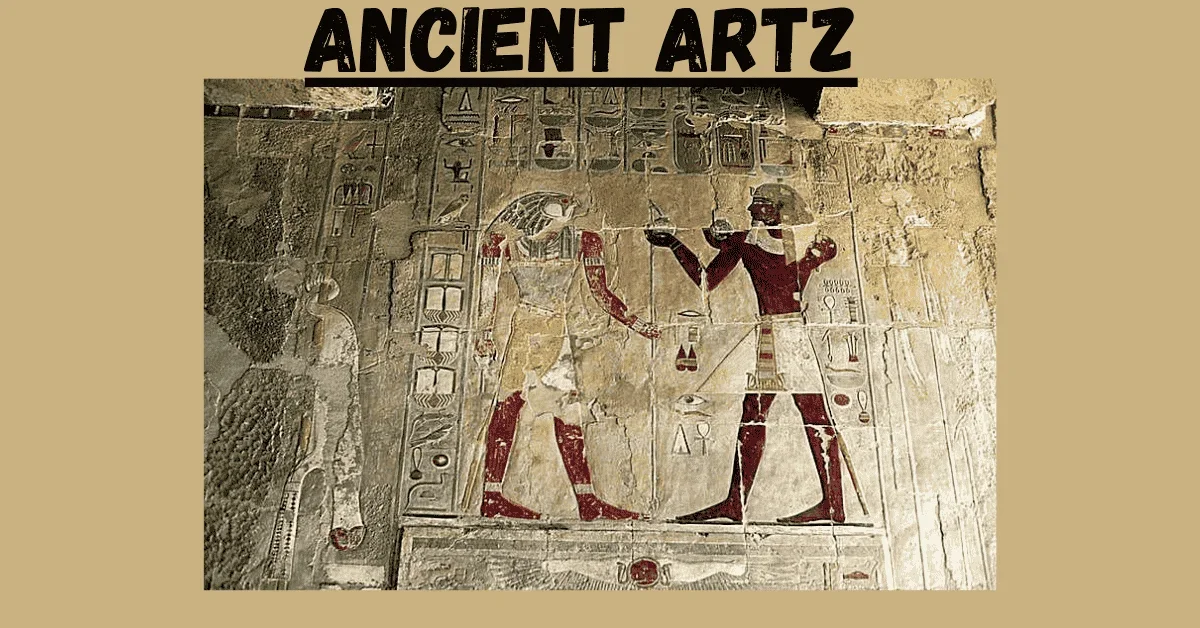Ancient artz encapsulates the remarkable creative expressions of early civilizations and cultures, spanning from prehistory to the early Middle Ages, particularly prior to the fall of the Roman Empire around the 5th century AD. This comprehensive term includes a vast array of artistic forms and styles from diverse cultures, employing various materials and techniques, each serving distinct purposes. The significance of ancient artz is deeply intertwined with the religious, social, political, and daily lives of individuals in ancient societies.
What is Ancient Artz?
The term “ancient artz” represents the earliest forms of artistic expression, often considered to include cave paintings from prehistoric times. Examples, such as the awe-inspiring cave paintings at Lascaux in France and Altamira in Spain, date back approximately 40,000 years and showcase the lives of early humans through depictions of animals and human figures. Additionally, portable art objects, such as the Venus of Willendorf, which dates back about 25,000 years, cast light on the symbolic thinking and cultural aspects of prehistoric humans.
How Old is Ancient Artz?
Ancient artz can be categorized by various notable milestones:
- Prehistoric Art: Encompasses early cave paintings and portable art, dating back as far as 40,000 years ago.
- Mesopotamian Art: Flourished around 3500-3000 BCE, featuring pottery and sculpture from the Sumerians.
- Ancient Egyptian Art: Emerging around 3000 BCE, it introduced hieroglyphics, pyramids, and a multitude of sculptural forms.
- Indus Valley Civilization: Thrived from about 2600-1900 BCE, noted for intricate pottery and seals.
- Classical Art: Greek and Roman art, beginning around 800 BCE and flourishing until the fall of Rome.
Overall, ancient artz embodies artistic achievements that extend back thousands of years, revealing the evolving creativity of human civilization.
Key Types of Ancient Artz
Ancient artz can be explored through several primary forms:
- Sculpture: Encompasses three-dimensional artworks made from materials like stone, metal, and clay. Sculptures often served religious or commemorative purposes, with notable examples being the statues from ancient Greece and monumental Egyptian sculptures.
- Painting: Ranges from cave art to frescoes and pottery decoration, depicting both daily life and spiritual themes. Significant cases include the Lascaux cave paintings and the frescoes of Pompeii.
- Architecture: Comprises the design and construction of monuments that echo the cultural and spiritual values of the time, such as The Great Pyramids of Giza and the Parthenon.
Elements of Ancient Artz
Understanding the elements of ancient artz enhances appreciation and analysis of artworks:
- Form: Refers to the shape and structure of an artwork.
- Line: Defines shapes, creates patterns, and guides viewer interpretation.
- Color: Symbolic colors can convey emotions or ideas.
- Texture: Surface quality influences tactile and visual experiences.
- Space: Arrangement and perspective within the composition convey depth.
- Symbolism: Represents deeper meanings through imagery.
- Composition: The strategic arrangement of visual elements fosters balance and harmony.
- Subject Matter: Themes often reflect cultural beliefs, daily lives, and religious practices.
Ancient Artz Around the World
1. Cave Art
- Lascaux Caves (France): Renowned for Upper Paleolithic paintings dating to around 17,000 years ago.
- Altamira Cave (Spain): Features vivid rock paintings of bison, approximately 36,000 years old.
2. Sculpture
- Venus of Willendorf (Austria): A 25,000-year-old fertility figurine.
- Moai Statues (Easter Island): Monumental representations of ancestors carved between 1400 and 1650 CE.
3. Ancient Egyptian Art
- Pyramids of Giza: Iconic tombs showcasing intricate carvings and hieroglyphics.
- Temple of Karnak: A monumental temple complex with richly detailed columns.
4. Ancient Greek Art
- Parthenon Sculptures: Classical works depicting mythological scenes from the 5th century BCE.
5. Ancient Roman Art
- Colosseum (Rome): A monumental amphitheater symbolizing Roman engineering.
6. Mesopotamian Art
- Ishtar Gate: A majestic entrance adorned with glazed brick reliefs from the 6th century BCE.
7. Indus Valley Art
- Carved Seals: Display intricate imagery and inscriptions, evidencing advanced trade networks.
8. Pre-Columbian Art
- Nazca Lines (Peru): Massive geoglyphs depicting various motifs carved into the desert.
9. African Art
- Ifé Heads (Nigeria): Beautifully crafted effigies representing the Yoruba rulers, dated to the 12th century CE.
10. Asian Art
- Buddhist Stupas: Dome-shaped structures adorned with elaborate carvings.
Frequently Asked Questions (FAQs)
What is the significance of ancient artz?
Ancient artz is significant because it provides crucial insights into the beliefs, social structures, and daily activities of ancient civilizations. Through the study of these artworks, we can better understand the human experience across cultures and time.
How did ancient cultures create art?
Ancient cultures utilized locally available materials such as pigments, stone, and clay. Techniques varied, including carving, painting, and building, often performed by specialized artisans.
What themes are commonly found in ancient artz?
Common themes in ancient artz include mythology, spirituality, nature, daily life, and historical narratives, reflecting the values and beliefs of the time.
Is ancient artz relevant today?
Yes! Ancient artz continues to influence contemporary artists and plays a vital role in understanding cultural heritage, inspiring new forms of creative expression.
Conclusion
Ancient artz stands as a powerful testament to the creativity, beliefs, and cultural identities of civilizations that thrived millennia ago. From the stunning cave paintings of prehistoric times to the grand architectural feats of ancient Egypt, Greece, and Rome, these artistic forms provide invaluable insights into the lives of our ancestors.
By exploring the various types, key elements, and global examples of ancient artz, we appreciate the artistry that surpasses time. As we study these creations, we recognize the shared threads of human experience, establishing connections between our past and present.
Ancient artz not only represents an archaeological curiosity but enriches our understanding of human expression and creativity throughout history.





